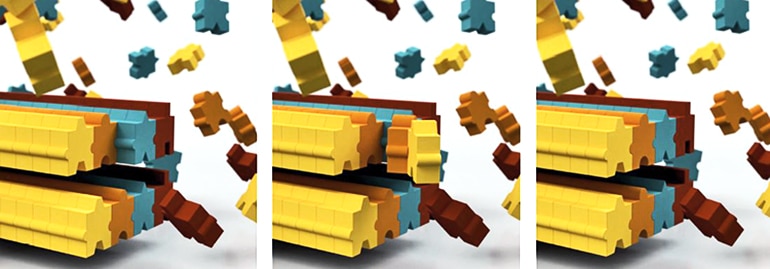A protein structure that is widespread in nature—the amyloid—is theoretically capable of multiplying itself, researchers report. This makes it a potential predecessor to molecules that scientists currently regard as the building blocks of life.
Long thought of as biological aberrations, amyloids are fibrous aggregates of short protein fragments. Amyloids have a bad reputation because they are believed to be the cause of multiple neurodegenerative diseases, including Alzheimer’s, Parkinson’s, and Creutzfeldt–Jakob disease.
Researchers only recently discovered that amyloids appear as structural and functional building blocks in a wide range of life forms, from humans to bacteria, yeast, and fungi. In vertebrates, they play a role in the production of the pigment melanin, while yeast cells use amyloid aggregates to form a kind of molecular memory.
Filling in the missing piece
Composed of short peptides, amyloid fibers can accelerate chemical reactions in a way similar to enzymes, and, therefore, they have been viewed as candidates for the first precursor molecules of life for several years . Until now, however, the theory of amyloids’ role in abiogenesis was missing an important chemical property: self-replication.

Roland Riek and his senior assistant Jason Greenwald, from the Laboratory of Physical Chemistry at ETH Zurich, were early proponents of the amyloid hypothesis. In their new experiment, they showed that amyloids can serve as a chemical template for the synthesis of short peptides.
“This ability also potentially applies to the amyloid itself—meaning the molecules can self-replicate,” says Riek.
Scientists regard the ability to self-replicate as an essential prerequisite for every early form of life. By proving that amyloids self-replicate, Riek and his team have not only highlighted another amazing aspect of this commonly underestimated protein, but also filled in a previously missing link in the amyloid hypothesis’ argument.
Almost two years before the experiment, the scientists proved that amyloid structures can spontaneously form with astounding ease from simple amino acids that probably already existed when the Earth was still lifeless, under reaction conditions that appear very plausible for the primordial soup.
Tiny droplets may have kickstarted life on Earth
The same is true for the newly discovered peptide synthesis: “The reaction mechanism seems to be of a general nature. It is stable over a wide range of temperatures and salt concentrations, in both acidic and alkaline environments,” explains Greenwald.
This discovery strengthens the researchers’ opinion that early in evolutionary history, amyloids could have played a central role in the development of early life forms as information carriers and catalytic units.
Building blocks battle
Until now, the most widespread idea for the molecular beginnings of life has been the RNA hypothesis, which sees ribonucleic acid (RNA) as the only key player in the prebiotic primordial soup. This is because, like the genetic material DNA, RNA molecules can code information and self-replicate.
The researchers are now picking away at the prevailing dogma of an RNA-based world. They think that the amyloid hypothesis is more plausible; firstly, because RNA molecules with a biological function are much larger and more complex, so they are unlikely to form spontaneously under prebiotic conditions. “Additionally, amyloids are much more stable than early nucleic acid polymers, and they have a much simpler abiotic synthesis route compared to the complexity of known catalytic RNAs,” says Greenwald.
‘Legos of life’ stack together to build proteins
“We will never be able to prove which is true—to do so, we would have to turn back the last 4 to 4.5 billion years of evolution,” Riek says. “However, we suspect that it was not one, but multiple molecular processes with various predecessor molecules that were involved in the creation of life.”
The researchers report their findings in Nature Communications.
Source: Michael Keller for ETH Zurich



